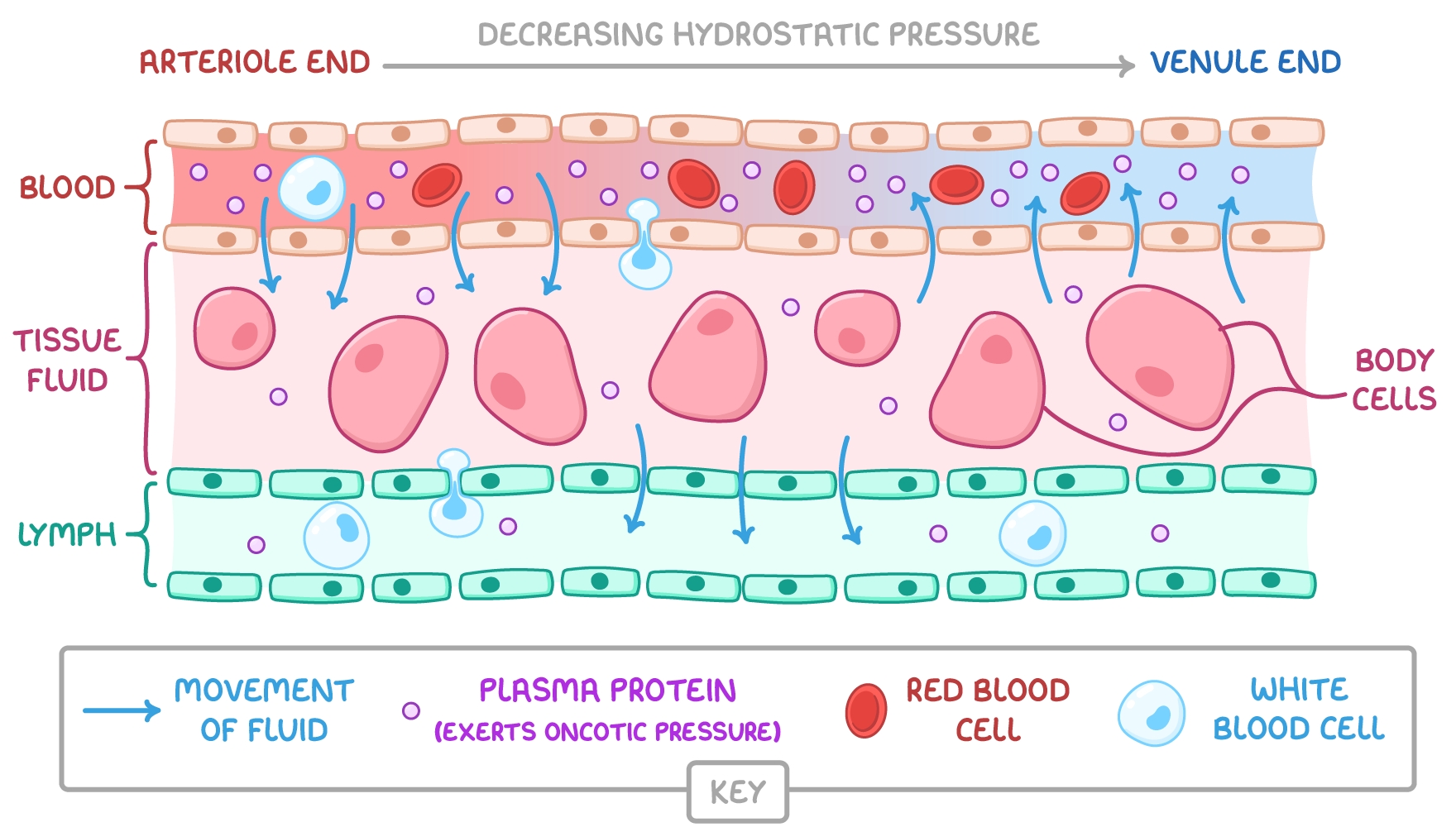Blood, Tissue Fluid & Lymph
This lesson covers:
- The composition and functions of blood
- How tissue fluid forms from plasma
- The composition and role of lymph
The composition of tissue fluid
Tissue fluid (interstitial fluid) fills spaces between cells (interstitial space). It is the site of diffusion between blood and body cells, providing cells with nutrients and oxygen while removing waste products. It also helps fight infection as it forms part of the immune response.
Tissue fluid has the same composition as plasma, except:
- Tissue fluid has no red blood cells.
- Tissue fluid has fewer proteins.
- Tissue fluid has fewer white blood cells.
The formation of tissue fluid
Tissue fluid is formed from the blood flowing through capillaries.

At the arteriole end of capillaries:
- A high hydrostatic pressure, exerted by the force of the heart pumping, forces fluid out of capillaries.
- This forms tissue fluid surrounding body cells.
At the venule end of capillaries:
- The hydrostatic pressure is lower.
- Proteins in blood exert a high oncotic pressure, a type of osmotic pressure, in capillaries.
- The water potential is lower in capillaries than in tissue fluid due to fluid loss.
- Some tissue fluid moves back into capillaries by osmosis.
The composition of lymph
Lymph is the fluid that flows around the lymphatic system via lymph vessels.
Lymph has a similar composition to tissue fluid, except:
- Lymph has less oxygen and nutrients.
- Lymph has more fatty acids.
- Lymph has more white blood cells (lymphocytes).
The formation and transport of lymph
Lymph is formed from tissue fluid.
It is formed and transported around the body as follows:
- Some tissue fluid doesn't re-enter capillaries from tissue fluid.
- This fluid instead drains into lymph vessels (lymph capillaries) forming lymph.
- Lymph is transported through lymph vessels by muscle contractions.
- Lymph is passed through lymph nodes to filter pathogens.
- Lymph is eventually returned to the blood.
The composition and functions of blood
Blood is the fluid that transports substances around the human circulatory system.
Blood consists of:
- Plasma - Mostly water, transports substances in solution.
- Red blood cells - Carry oxygen effectively due to their flexible, biconcave shape and lack of organelles allowing more space for haemoglobin.
- White blood cells - Immune cells, including phagocytes (e.g. neutrophils, which have a lobed nucleus, and monocytes that develop into macrophages) and lymphocytes (which have a large round nucleus and very little cytoplasm).
- Platelets - Involved in clotting.
Functions of blood:
- Transports oxygen and carbon dioxide.
- Transports nutrients from digestion.
- Transports waste for excretion.
- Transports hormones.
- Transports food from storage.
- Transports clotting factors.